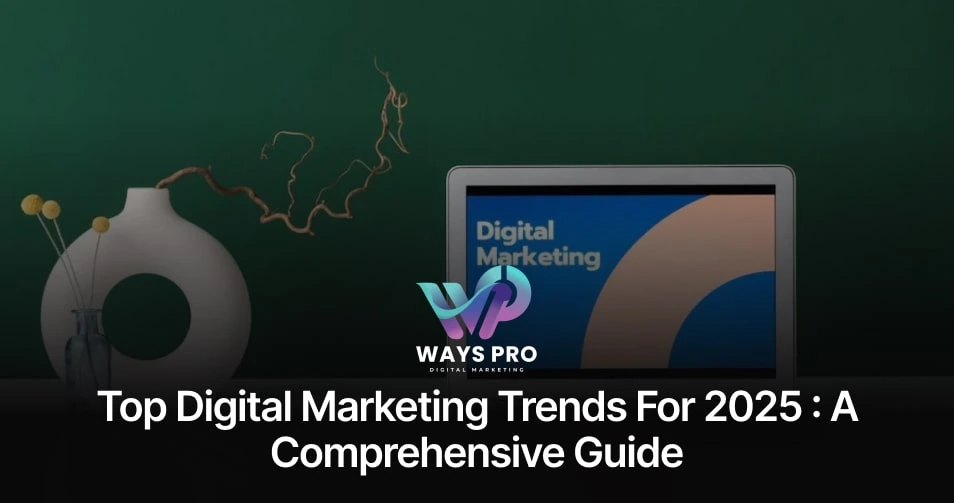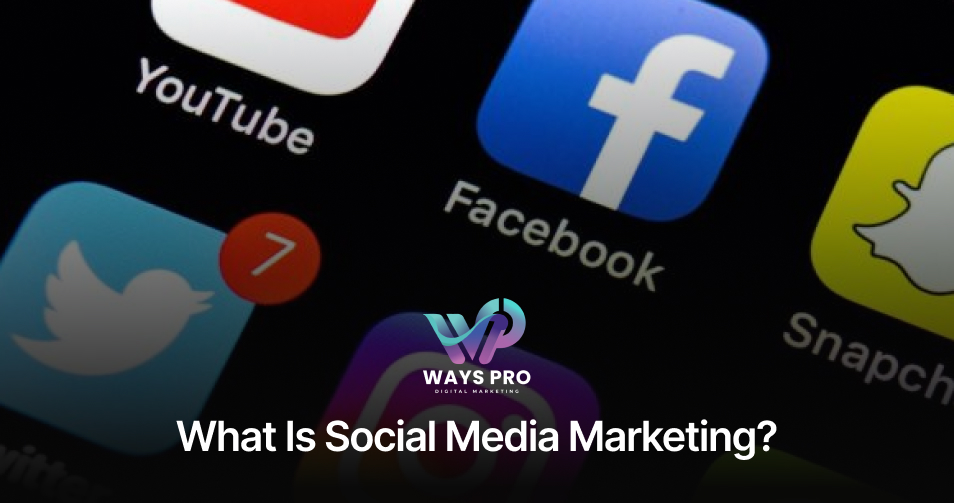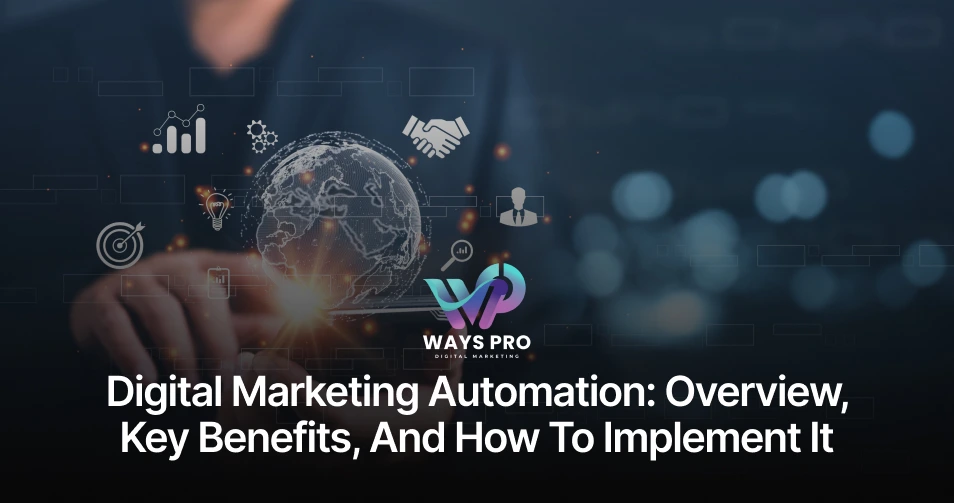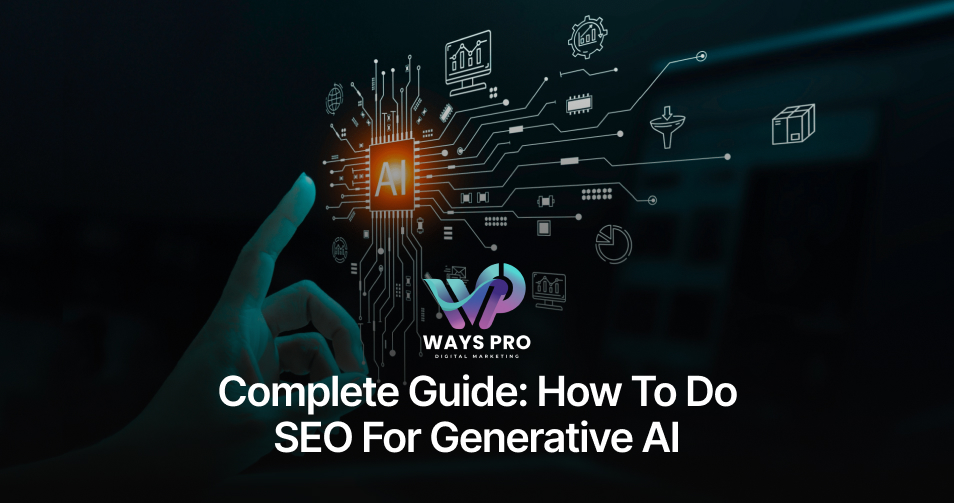In the ever-evolving world of digital marketing, new trends and strategies are emerging that could significantly impact marketers, content creators, and businesses. This year, advancements in AI, content personalization, data privacy changes, and more are shaping how digital marketers reach audiences and generate results. Here’s a look at the top trends 2024 and tips for staying ahead.
Adapting to the Cookie-Less Future

One of the biggest changes in digital marketing is phasing out third-party cookies. Many browsers, like Google and Safari, have already removed them. This means marketers will face challenges in tracking user behavior and targeting ads. Here’s how brands can adapt:
- Focus on First-Party Data: Collect data from your audience through surveys, email sign-ups, and customer interactions to create tailored ad experiences.
- Invest in Strong Brand Identity: Without tracking data, strong branding will help attract loyal customers.
- Optimize Content for Personalization: By understanding your audience’s needs through organic engagement, brands can foster long-lasting connections.
Harnessing Retargeting in a Changing Landscape

Retargeting is crucial in performance marketing, allowing businesses to re-engage audiences who showed interest but didn’t convert. With cookies fading away, retargeting strategies must evolve:
- Use CRM Data: Rely on customer relationship management (CRM) platforms to track customer interactions and personalize follow-ups.
- Engage High-Intent Users: Analyze which users are most interested in your products and focus retargeting efforts on them.
- Adopt New Technologies: Look for innovative data solutions that enable privacy-compliant targeting.
The Rise of Influencer Marketing

Influencer marketing is nothing new, but the landscape has shifted significantly recently. In 2024, the focus is less on celebrity influencers with millions of followers and more on micro (10,000-50,000 followers) and nano influencers (1,000-10,000 followers). These smaller influencers often have more engaged, niche audiences, making them ideal for brands looking to target specific demographics.
Why are micro and nano influencers so effective? Their audiences are typically more loyal, and the influencer’s recommendations feel more like advice from a friend rather than a paid advertisement. As influencer trustworthiness is crucial, brands partnering with the right influencers can see higher engagement and conversions.
Influencer marketing is expanding beyond mere collaborations. Brand founders and team members now actively connect with audiences to build trust. Key trends include:
- Authentic Storytelling: Small and medium business founders share their journeys and involve their teams to form personal connections with audiences.
- Influencers Launching Their Brands: Top influencers are starting their brands, bringing unique collaboration opportunities for businesses.
Key strategies for working with influencers include:
- Focus on Long-Term Partnerships: Brands should invest in long-term relationships with influencers who align with their values rather than one-off campaigns. This creates more authentic and consistent promotion, which resonates better with audiences.
- Leverage Affiliate Programs: Many influencers now prefer performance-based partnerships. Setting up an affiliate program allows influencers to earn commissions for driving sales, incentivizing them to promote your brand authentically.
- Use Influencer-Generated Content in Paid Ads: Content created by influencers can be repurposed for paid advertising campaigns. This strategy can boost your ads’ performance, as influencer content often feels more organic and relatable than traditional brand ads.
- Focus on Quality Content: Engage audiences by creating genuine, high-quality content that resonates with your target audience’s needs and interests.
The Impact of AI and Automation in Marketing

AI and automation continue transforming digital marketing, with AI-powered tools playing a significant role in content creation, customer service, and data analysis. Here’s what to expect:
- Enhanced Personalization: AI enables brands to craft messages and ads based on user preferences and behavior.
- Workflow Automation: Automated tasks, like scheduling posts, email marketing, and responding to common customer queries, save time and enhance efficiency.
- Limitations of AI: While AI supports many functions, it cannot replace human marketers’ creativity and emotional connection.
The Hype of Social Commerce
Social media platforms have transitioned from being mere hubs of communication and entertainment to becoming powerful e-commerce channels. In 2024, social commerce—a blend of social media and online shopping—is at the forefront of the marketing world. Platforms like Instagram, Facebook, TikTok, and even Pinterest have integrated shopping features, allowing users to browse, compare, and purchase products directly within the app.
Why is social commerce booming? Convenience is a key factor. Consumers no longer need to navigate away from their social media feeds to complete a purchase. This streamlined shopping experience results in higher conversion rates and a more personalized journey for customers. Brands that adopt social commerce strategies are not just selling products but creating immersive shopping experiences.
To make the most of social commerce, brands should:
- Use Shoppable Posts: Platforms like Instagram and TikTok have made it easy for businesses to tag products directly in their posts. This reduces friction in the buying process and provides a seamless experience for users.
- Collaborate with Influencers: Influencers remain pivotal in driving sales through social commerce. Partnering with the right influencers allows brands to tap into their audience’s trust and reach, boosting credibility and conversions.
- Leverage User-Generated Content (UGC): Consumers trust other consumers. Encouraging your audience to share their experiences and tag your brand in their posts can create authentic endorsements, leading to higher engagement and more sales.
Shopping directly from social media is becoming increasingly common, with platforms like Instagram and WhatsApp rolling out new features:
- Live Commerce and Shoppable Ads: Social platforms now offer live commerce options and shoppable ads to streamline purchasing.
- Integrated Payment Options: Soon, users can make payments directly on social platforms, eliminating the need for external websites or apps.
- Boosted Customer Convenience: With integrated shopping and checkout options, brands can offer a seamless customer journey.
Short-form video Content Dominates

The attention span of social media users continues to shrink, making short-form video content the reigning king of 2024. TikTok set the pace, and now Instagram Reels, YouTube Shorts, and even Facebook Stories are following suit. Short-form videos, typically 15 to 60 seconds, captivate users quickly and deliver content in digestible formats.
Why is short-form video so effective? It’s engaging, visually appealing, and caters to the need for instant gratification. Moreover, algorithms on platforms like TikTok and Instagram prioritize this content, allowing brands to reach broader audiences organically.
If you’re looking to create successful short-form video content, here are some strategies:
- Focus on Storytelling: A compelling narrative can impact even the shortest videos. Whether it’s a behind-the-scenes look at your business, a quick product demo, or a relatable customer story, tell stories that resonate with your audience.
- Embrace Trends: TikTok and Reels are all about trends. By hopping on viral challenges, sounds, or themes, brands can stay relevant and increase their visibility. However, it’s crucial to maintain authenticity and ensure the trend aligns with your brand message.
- Use Closed Captions: With many users watching videos on mute, closed captions are essential. They not only enhance accessibility but also ensure your message is communicated even without sound.
Content writing techniques in 2025

In 2024, content writing remains a crucial aspect of digital marketing, helping businesses attract, engage, and convert their audiences. As the internet evolves and consumer behaviors shift, how content is created and distributed has also changed. Content writing today is not just about crafting informative articles or blog posts but also about understanding audience needs, optimizing for search engines, and leveraging emerging technologies to provide value.
In this blog, we will explore the key trends shaping the content writing industry in 2025, best practices for effective content creation, and how writers can adapt to stay ahead in a competitive digital world.
Utilizing Personal GPT Models for Content Creation
One emerging trend in digital marketing is the use of AI-powered GPT models to streamline work processes, improve content quality, and engage with clients effectively:
- Customized AI Models: Marketers can train a GPT model to understand their unique style, branding, and client needs.
- Effective Prompting Techniques: Developing skills in prompt writing will help marketers get tailored results from AI tools.
- Increased Efficiency: Personal GPTs simplify repetitive tasks, enabling agencies to focus more on creativity and strategy.
Skill Up with Job-Guaranteed Courses
As the digital marketing industry rapidly changes, professionals need advanced, up-to-date skills to stay competitive. Investing in structured training can boost employability and success. Here’s why job-guaranteed courses are valuable:
- Comprehensive Training: Look for boot camps that cover everything from AI tools to advanced content strategies.
- Real-World Projects: Practical, hands-on projects help students build strong portfolios.
- Placement Support: Courses that offer placement support can boost job opportunities in the field.
Conclusion
Digital marketing is moving toward a more data-protected, automated, and customer-centric approach. By understanding these trends, digital marketers can stay ahead of industry shifts, enhance their skill sets, and build stronger connections with their audiences. To get started, consider investing in a reputable digital marketing course or certification program to keep up with the latest skills and technologies in the industry.








